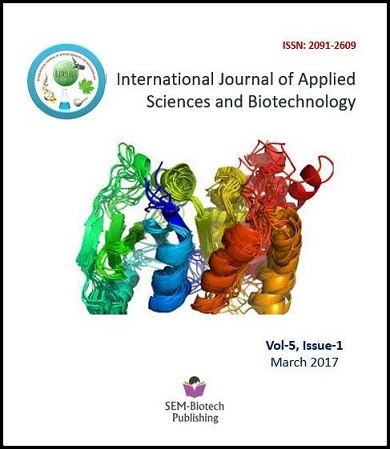Mycosporine-Like Amino Acids (MAAs) Profile of Two Marine Red Macroalgae, Gelidium sp. and Ceramium sp.
DOI:
https://doi.org/10.3126/ijasbt.v5i1.16568Keywords:
Gelidium, Ceramium, Mycosporine-like amino acids, Shinorine, Porphyra-334, UVRAbstract
Macroalgae have evolved different strategies to mitigate the damaging effects of solar ultraviolet radiation (UVR), including accumulation of photoprotective compounds such as mycosporine-like amino acids (MAAs). MAAs are secondary metabolites, synthesized by a large variety of organisms including macroalgae, phytoplanktons, cyanobacteria, lichen, fungi and some marine animals. MAAs act as photoprotectants and antioxidants. In the present investigation, MAAs profile of methanolic extracts of two marine red algae Gelidium sp. and Ceramium sp., collected from their natural environment, was studied. High-performance liquid chromatography (HPLC) and UV-Vis spectrometry analyses were used to reveal different MAAs profile in the extracts obtained from these two red algae. The MAAs isolated by HPLC were identified as shinorine (λmax= 333.5 nm), porphyra-334 (λmax=332.3 nm) and palythine (λmax=317.9 nm) having retention times (RT) 1.26, 2.12 and 3.64 min, respectively, in the extract obtained from Gelidium sp. Similarly, shinorine (λmax=332.3 nm), porphyra-334 (λmax=333.5 nm) and palythinol (λmax=332.5 nm) with RT 1.27, 2.13 and 4.61 min, respectively, were identified in the extract obtained from Ceramium sp. This study revealed that Gelidium sp. and Ceramium sp. could serve as potential source for economical exploration of MAAs in pharmaceutical sciences.
Int. J. Appl. Sci. Biotechnol. Vol 5(1): 12-21




